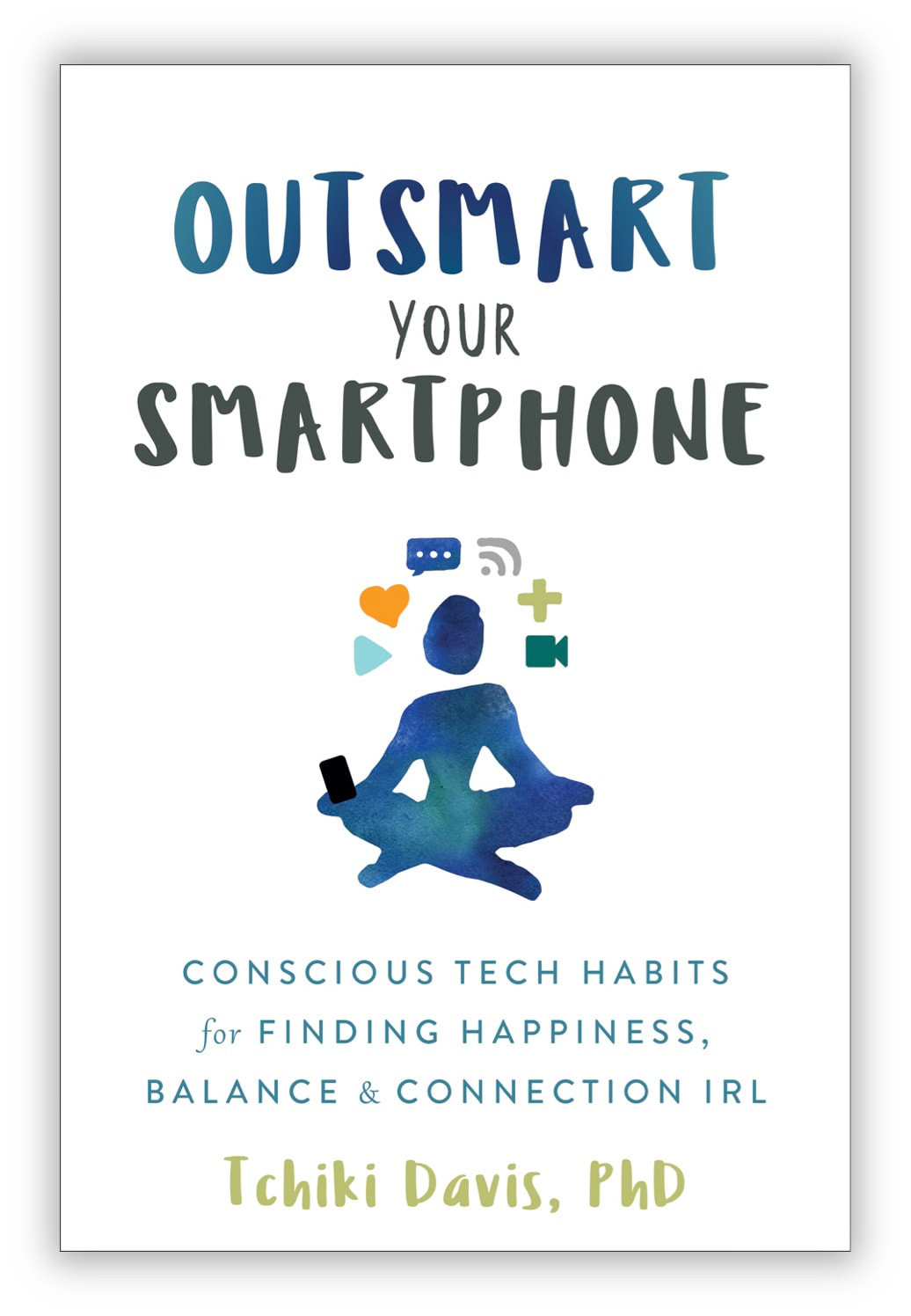Slowing Down: 14 Science-Based Ways to Enjoy LifeFeeling frazzled? Overwhelmed? Or anxious? Discover these science-based tips and strategies to slow down, savor the moment, and enjoy life a bit more.
*This page may include affiliate links; that means I earn from qualifying purchases of products.
Do you feel like you're constantly running on the treadmill of life? Not quite sure how to take a break or stop feeling like you always have to be 'doing' something? It's not always easy to slow down, but it turns out that slowing down is exactly what we need. Slowing down is not only good for our well-being, but it can also help us feel less stressed while accomplishing more.
In this article, we'll talk about science-based ways to slow down and enjoy life more. Before we dive in, we thought you might want some other well-being-boosting freebies. If you're seeking greater well-being, get your free personalized report when you take our well-being quiz. And for our well-being entrepreneurs, coaches, and consultants? Download our Wellness Business Growth eBook to get expert tips, tools, and resources to make a bigger impact and grow your business fast. Are You a Therapist, Coach, or Wellness Entrepreneur?
Grab Our Free eBook to Learn How to
|
|
We often feel frazzled and need a break from our busy day, so what do we do? We pick up our phones. We're scrolling through social media, the news, or shopping websites. But all these activities do is make our heads even fuller as we consume huge amounts of information in a tiny amount of time. That's the opposite of slowing down.
To start, it would do us some good to spend less time on our phones. But, interestingly, it also matters a lot how we spend the time on our phones. Are we stimulating our brain with information or anger? Or are we using our phones to relax and recuperate? To learn more about how to use your phone in ways that are good for you, check out my book, Outsmart Your Smartphone. |
6. Slow Down by Doing Something Outside
Getting outdoors may just be one of the best ways to slow down. More specifically, research has shown that wilderness trips help us to slow down. In one study, participants wrote about how wilderness trips led to ‘no time-consciousness’. After undergoing a wilderness trip, participants reported wanting to slow down, consume less, and simplify. They said they felt this way at least in part because they now had a better sense of what really matters (Talbot & Kaplan, 1986).
Indeed, slowing down seems to help us better understand what really matters; and discovering what really matters leads us to want to slow down more. By jumpstarting this process with the support of nature, we can ease our foot off the accelerator of our lives and begin to enjoy the moment a bit more.
Indeed, slowing down seems to help us better understand what really matters; and discovering what really matters leads us to want to slow down more. By jumpstarting this process with the support of nature, we can ease our foot off the accelerator of our lives and begin to enjoy the moment a bit more.
7. Slow Down by Having Physical Contact With the Earth
Recent research has shown that physical contact of the human body with the earth—also known as grounding—has numerous health benefits. For example, one study showed that when people walked on the ground with a conductive patch on their feet, they showed improvements in cardiovascular health (Chevalier, Sinatra, Oschman, & Delany, 2013).
Another interesting area of research shows that a type of bacteria in soil activates brain cells that produce serotonin, a feel-good neurochemical. That means that simply touching soil more frequently may help fight off depression (Lowry et al., 2007). Again, we see how slowing down—in this case by taking the time to remove our shoes or plant a garden—can help us improve our health and well-being.
Another interesting area of research shows that a type of bacteria in soil activates brain cells that produce serotonin, a feel-good neurochemical. That means that simply touching soil more frequently may help fight off depression (Lowry et al., 2007). Again, we see how slowing down—in this case by taking the time to remove our shoes or plant a garden—can help us improve our health and well-being.
8. Slow Down by Listening to Binaural Beats
There is evidence to suggest that listening to relaxing music can reduce cortisol, one of the main stress hormones (Khalfa et al., 2003). More specifically, listening to binaural beats—that's when two tones with slightly different frequencies are played to each ear—can help improve performance (Garcia-Argibay, Santed, & Reales, 2019).
9. Slow Down by Practicing Savoring
When we practice savoring we reflect back on the positive qualities or experiences we've had in the near or long-ago past. As a result, we enjoy things more. When we're trying to slow down, Savoring can be a useful strategy. Just take a moment when you're enjoying yourself or right after you've enjoyed yourself to really feel the good feelings that go along with that experience. Enjoy the moment or bring back positive emotions from the past.
10. Slow Down by Taking the Time to Do Enjoyable Things
If we're crazy busy, always running from one thing to the next, we're probably not taking enough to do the things we really love doing. Our bosses may want us working 24-7 so it's up to us to say 'no' and decide where we set the limits. We're the only ones who will advocate for our own work-life balance.
Setting limits is important, especially because there has been a recent push from our culture and workplaces to be mindful and be grateful for everything. Sure, being grateful is all well and good, but what if our lives just plain need more stuff to be grateful for? Regardless of how many self-help techniques we use, we still need rest and we still need positive experiences.
That's why we need to do more things we enjoy. They don't need to be big things—maybe we decide to cook dinner instead of always eating out, or maybe we go for a walk at the end of the day. It's up to us to make time for the things we love most.
Setting limits is important, especially because there has been a recent push from our culture and workplaces to be mindful and be grateful for everything. Sure, being grateful is all well and good, but what if our lives just plain need more stuff to be grateful for? Regardless of how many self-help techniques we use, we still need rest and we still need positive experiences.
That's why we need to do more things we enjoy. They don't need to be big things—maybe we decide to cook dinner instead of always eating out, or maybe we go for a walk at the end of the day. It's up to us to make time for the things we love most.
11. Slow Down Your Thoughts
Sometimes when we get the feeling that life is too hectic, it's mostly hectic because of what's going on in our heads. Maybe we're worrying about worst-case-scenarios or running over what we'll say to our coworker tomorrow. Sometimes we just need to short-circuit our thoughts. Some effective strategies to aid this process can be daily journaling—we get those thoughts out of our heads and onto paper. We might also go for a run or take a cold shower (Mourot et al., 2008)—two techniques that can help our brains switch gears and get unstuck.
12. Slow Down by Doing Yoga
Yoga involves slow, controlled breathing and slow, careful movements. So ya, it's slow. It forces us to get more comfortable with stillness and not always rushing to the next thing. And we (hopefully) learn that doing so makes us feel calmer and more centered. And an added bonus is that regular practice of yoga has been shown in research to actually reduce cortisol, one of the main stress hormones (Thirthalli et al., 2013).
13. Slow Down by Breathing Slowly
Breathing slowly activates the parasympathetic nervous system, our rest and digest system. This system is the counterbalance to the sympathetic nervous system, our fight or flight system. So by activating the parasympathetic nervous system, we help our body slow down so that it can engage in restful processes like sleep and digestion.
So, to slow our bodies and minds down, it can help to take some slow, deep breaths. There are lots of ways to do this. Below is a video to guide you through some slow breathing.
So, to slow our bodies and minds down, it can help to take some slow, deep breaths. There are lots of ways to do this. Below is a video to guide you through some slow breathing.
Video: Slow Breathing Exercises
14. Slow Down by Detoxing Your Stress
If we've been stressed or overwhelmed for a long time, we can have a lot of built up stress hormones—things like cortisol, epinephrine, and norepinephrine—just circulating around our bodies, making it feel 'wired but tired'. Especially if we have genes like the sluggish version of the COMT gene, our bodies don't process stress hormones very quickly and we can end up feeling frazzled, even from small stressors. That's why detoxing our stress, or taking a detox-like approach to stress relief can be extremely helpful for some.
Articles Related to Slowing Down
Want to learn more about slowing down? Check out these articles.
Books Related to Slowing Down
If you’d like to keep learning more about how to slow down, here are a few books that you might be interested in.
Final Thoughts Related to Slowing Down
Do you feel like you're constantly running on the treadmill of life? It's not always easy to slow down, but it turns out that slowing down can help us imp[rove our well-being. It can also help us feel less stressed while accomplishing more.
Don't Forget to Grab Our Free eBook to Learn How to
Grow Your Wellness Business Exponentially!
References
- Cashman, K. (2012). The pause principle: Step back to lead forward (Vol. 35, No. 1). Berrett-Koehler Publishers.
- Friend, K. E. (1982). Stress and Performance: Effects of Subjective Work Load and Time Urgency 1. Personnel Psychology, 35(3), 623-633.
- Garcia-Argibay, M., Santed, M. A., & Reales, J. M. (2019). Efficacy of binaural auditory beats in cognition, anxiety, and pain perception: a meta-analysis. Psychological Research, 83(2), 357-372.
- Khalfa, S., BELLA, S. D., Roy, M., Peretz, I., & Lupien, S. J. (2003). Effects of relaxing music on salivary cortisol level after psychological stress. Annals of the New York Academy of Sciences, 999(1), 374-376.
- Khoury, B., Lecomte, T., Fortin, G., Masse, M., Therien, P., Bouchard, V., ... & Hofmann, S. G. (2013). Mindfulness-based therapy: a comprehensive meta-analysis. Clinical psychology review, 33(6), 763-771.
- Krick, A., & Felfe, J. (2019). Who benefits from mindfulness? The moderating role of personality and social norms for the effectiveness on psychological and physiological outcomes among police officers. Journal of occupational health psychology.
- Lowry, C. A., Hollis, J. H., De Vries, A., Pan, B., Brunet, L. R., Hunt, J. R., ... & Lightman, S. L. (2007). Identification of an immune-responsive mesolimbocortical serotonergic system: potential role in regulation of emotional behavior. Neuroscience, 146(2), 756-772.
- Mourot, L., Bouhaddi, M., Gandelin, E., Cappelle, S., Dumoulin, G., Wolf, J. P., ... & Regnard, J. (2008). Cardiovascular autonomic control during short-term thermoneutral and cool head-out immersion. Aviation, space, and environmental medicine, 79(1), 14-20.
- Quoidbach, J., Wood, A. M., & Hansenne, M. (2009). Back to the future: The effect of daily practice of mental time travel into the future on happiness and anxiety. The Journal of Positive Psychology, 4(5), 349-355.
- Rowe, M. B. (1986). Wait time: Slowing down may be a way of speeding up!. Journal of teacher education, 37(1), 43-50.
- Talbot, J. F., & Kaplan, S. (1986). Perspectives on wilderness: Re-examining the value of extended wilderness experiences. Journal of Environmental Psychology, 6(3), 177-188.
- Thirthalli, J., Naveen, G. H., Rao, M. G., Varambally, S., Christopher, R., & Gangadhar, B. N. (2013). Cortisol and antidepressant effects of yoga. Indian journal of psychiatry, 55(Suppl 3), S405.
- Ulrich, R. S., & Parsons, R. (1992). Influences of passive experiences with plants on individual well-being and health. The role of horticulture in human well-being and social development, 93-105.
Are You a Therapist, Coach, or Wellness Entrepreneur?





